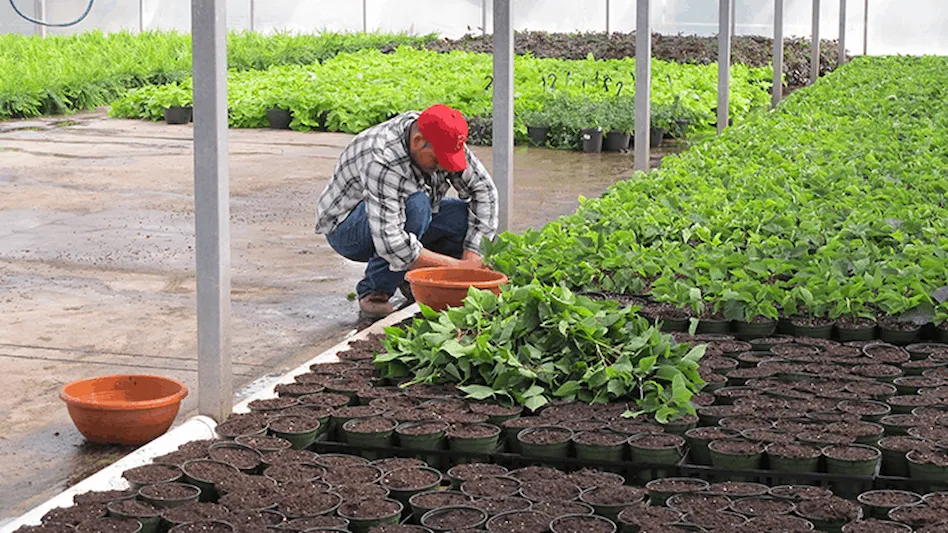
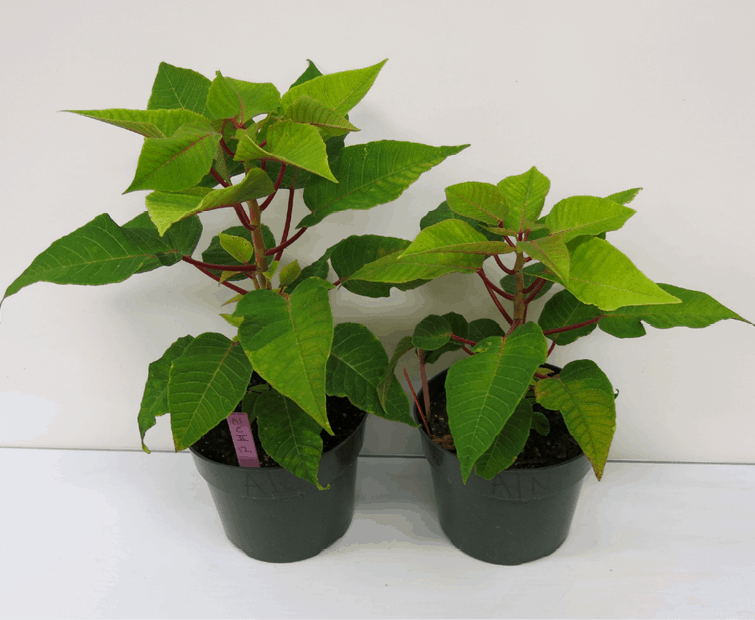
Plant pathogenic fungi is one of the most common causes of root impairment in greenhouse crops. Accurately diagnosing what pathogen has invaded your growhouse is paramount in both managing the problem and preventing future incursions.
Controlling fungal root disease is a challenge largely due to the ubiquitous character of certain pathogens, note experts interviewed by Greenhouse Management Magazine. Organisms such as pythium, phytophthora and fusarium are natural inhabitants in soil and form survival structures allowing them to endure for years.
In greenhouses, pathogens proliferate in plant debris and can be introduced into the growth medium by soiled hands, tools, flats and colonized transplants. University of Maine’s Alicyn Smart, a plant pathologist and director at the school’s plant disease diagnosis laboratory, points to fungus gnats and shore flies as another vector for root-damaging disease.
These annoying insects are attracted to damp locations where fungi are apt to flourish, Smart says. While adult fungus gnats are more of a nuisance, their larvae feed on plant roots and decaying organic matter. Feeding damage creates wounds that allow soilborne pathogens — including pythium and fusarium — to enter and kill plants. The larvae themselves may also carry deadly pathogens, making swift eradication all the more important for growers.
“Both fungus gnats and shore flies can move pathogens around the greenhouse, which is something that people don’t often think about,” Smart says. “Gnats can deposit their spores into roots and stems.”
Pythium, one of the most common organisms found in the roots of greenhouse crops, is commonly associated with excessive nutrient levels or ammonium toxicity. With a genus comprised of more than 100 species, pythium can lead to any number of diseases, among them crown and stem rot and damping-off.
Damping-off affects seeds and new seedlings by rotting stem and root tissues at and below the soil surface. Though infected plants may germinate problem-free, within a few days they can become mushy and water-logged. Species of fusarium, phytophthora and rhizoctonia can cause damping-off, but greenhouses with poor soil draining and high humidity are more likely to invite pythium into the grow space.
“Pythium is not a true fungi, it’s a water mold,” Smart says. “With damping-off, another symptom for growers to look out for is when the plant flops over at the seedling stage.”
Where disease finds a home
Pythium is a classic “root nibbler” that can kill greenhouse plants outright, says Mary Hausbeck, a professor of plant, soil and microbial sciences at Michigan State University.
Non-uniform crop height is a telltale sign of a pythium invasion, particularly for groups of crops planted around the same time.
Soil with high soluble salt content is vulnerable to the pathogen, Hausbeck notes. Being a water mold, pythium will spread more rapidly when soil is saturated, or if staff members don’t adjust watering routines after a series of overcast days.
Like pythium, phytophthora favors excess moisture and nitrogen fertility. Though less common than its fellow water-loving cousin, species of phytophthora are more aggressive and ultimately quite harmful to a greenhouse crop.
“I’ve never witnessed a situation with phytophthora that was not highly destructive,” Hausbeck says. “A grower may see a problem they think is pythium, but it’s not responding to treatment how they thought it would. That’s when we find out it’s phytophthora.”
Although soaked soil and high nitrogen content provide optimum conditions for phytophthora to thrive, unattended plant material is thought to be the pathogen’s most likely source of origin. Phytophthora is not usually found in commercial seed, nor does it travel easily through air over long distances.
Both phytophthora and pythium are oomycetes based on their algae-like structure and preference for wet, humid conditions. Cultivated soils are a common home for fusarium, a fungus carrying at least ten different species known to cause root rot. Fusarium often occurs in soils where dry beans have been previously grown, with root rot severity depending on cropping history, plant spacing, moisture and temperature.
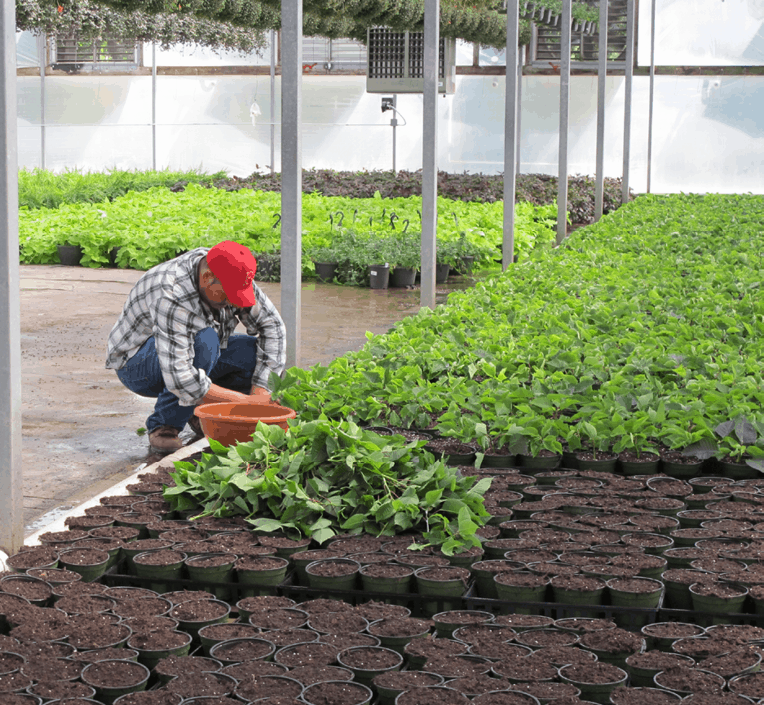
Catching the problem early
When combating any pathogen, catching the warning signs early is key to staving off plant death, experts say. Fusarium rot appears as reddish-brown lesions on the primary root two to three weeks after planting. Affected areas may gradually become brown, with symptoms extending up the main root to the soil surface.
Generally, greenhouse owners should check their roots regularly, either during watering or when examining foliage.
“Growers should actually take plants out of containers to look at roots,” says the University of Maine professor Smart. “They should also know what healthy roots look like. Good ones will be white and fleshy, while diseased roots may be brown or degrade in your hands. If you have any previous issues with root disease, you should look at them more often.”
As symptoms develop over time, confirming an accurate diagnosis can be problematic, remarks Hausbeck of Michigan State.
“In phytophthora and fusarium, you’ll see a wilt in the plant,” says Hausbeck. “What throws people is if they have a basket with three plants with one wilted and two that aren’t. That’s root rot that hasn’t yet moved on to the other plants. The best course is to remove the wilted plant and all soil associated with the root system, then treat preventively moving forward, because your other plants may have an infection that’s not visible yet.”
Disease insinuating itself into a greenhouse may not be inevitable, but it is likely that most commercial growers at some point will encounter an infection. The question remains – how can owners eliminate disease and, just as critically, prevent it from returning?
Janna Beckerman, a professor of botany and plant pathology at Purdue University, says too many growers choose to simply dispose of a few infected plants rather than taking a more merciless approach.
“That will just allow the pathogen to persist and require additional fungicide applications,” says Beckerman. “If you have to cull, be ruthless. The best greenhouses I’ve been in are absolutely ruthless in their sanitation.”
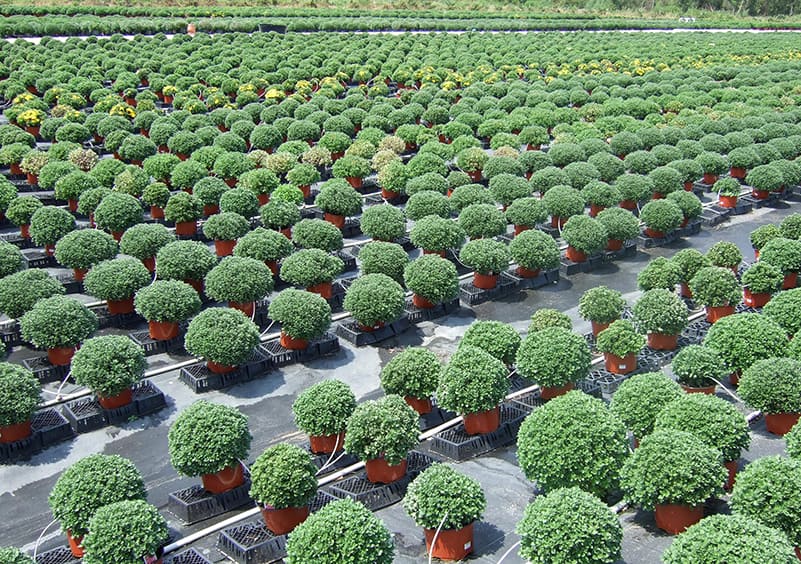
When and how to use fungicides
Fungicides are vital tools for managing disease when combined with proper vetting of products and their classifications. One method of categorizing fungicides is by their “modes of action” — or the way the fungicides affect a fungus. Site-specific fungicides react with one very precise biochemical process, called the target site. Multi-site products have multiple modes of action, impacting many target sites and interfering with the metabolic process of fungi.
Rotating fungicides, which requires alternating products with different modes of action, is crucial in limiting the amount of time a pathogen is exposed to any single product, says Beckerman. For best results, growers should also avoid consecutive applications of fungicides within the same chemical class.
“When you do use fungicides, make sure to apply the recommended dose as listed,” Beckerman says. “Skipping a spray is the worst thing you can do, because it allows the population to come back up.”Once the disease is destroyed, an increased focus on cultural controls can help stave off a potentially disastrous return. General practices for greenhouses include inspecting incoming plant material, avoiding overwatering and controlling insect pests and weeds.
Sanitation best practices can be as simple as keeping a watering hose off any surface that collects soil. Smart suggests cleaning reusable trays with one part bleach and nine parts water, as well as disinfecting tools with ZeroTol or other broad-spectrum fungicide.
“After removing the disease, sanitation and good cultural practices will alleviate reliance on fungicides,” says Smart.
Clean Grow and Green-Shield are just two EPA-registered disinfectants well-suited for disease control on benches and walkways. Steam-cleaning trays and pots are additional measures in keeping your growhouse free of root-ravaging pathogens, Beckerman says.
“There’s dozens of products you can use,” she adds. “Just follow the label correctly, and all will be effective against most pathogens.”
Many labs conduct a serological test to uncover harmful organisms. Meanwhile, disease resistant plant varieties can save growers from pathogen-inflicted pain. For example, Cora Vinca are the first varieties of the species resistant to phytophthora.
“When growing more vulnerable varieties like poinsettias, make sure to use well-draining media so there’s no water-pooling or puddling,” Beckerman says. “That’s true for mums, too. If there’s a history of pathogens in the greenhouse, you can treat it prophylactically with fungicides.”
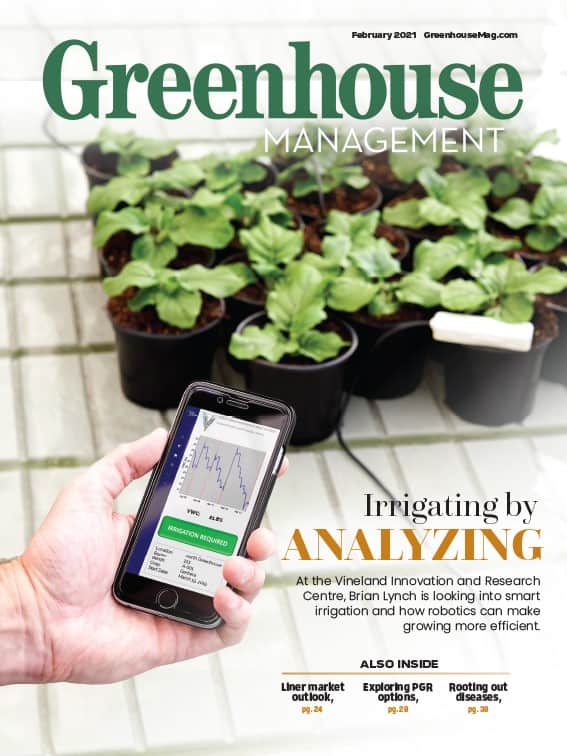
Explore the February 2021 Issue
Check out more from this issue and find you next story to read.
Latest from Greenhouse Management
- CIOPORA appoints Micaela Filippo as vice secretary-general
- Passion grows progress
- Registration opens for Darwin Perennials Day
- U.S. Department of Labor finalizes farmworker protection rule
- Azo Root is now available from Harrell’s
- Bidens ferulifolia Blazing Glory
- Rob Hanifin joins Ridder North America as product specialist for climate screens
- The importance of measuring light





